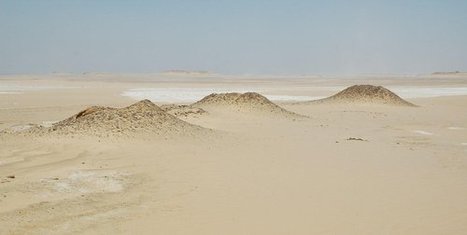The place that went viral last month as the potential site of a mysterious Egyptian pyramid looks more like a series of mounds on the surface of Mars when you see it up close.
The site has been familiar to Egyptologists since the 1920s: It's thought to have been the locale for a desert settlement going back to Egypt's Ptolemaic era, when Greek and Roman influences were on the ascendance. Did these mounds serve as watchtowers, or tombs, or well sites? That's what the Soknopaiou Nesos Project wants to find out.
Egyptologist Paola Davoli of Italy's University of Salento in Leccefrom the project has also been in touch with Angela Micol, the North Carolina researcher who turned the spotlight on Dimai last month via her Google Earth Anomalies website.
Based on the satellite imagery, Micol imained that the mounds represented eroded pyramids. The up-close pictures make the formations look more like piles of rocky rubble. The largest one appears to have the ruins of a square building or walls on its summit, but it'll take a full-blown excavation to fully date the site.



 Your new post is loading...
Your new post is loading...







